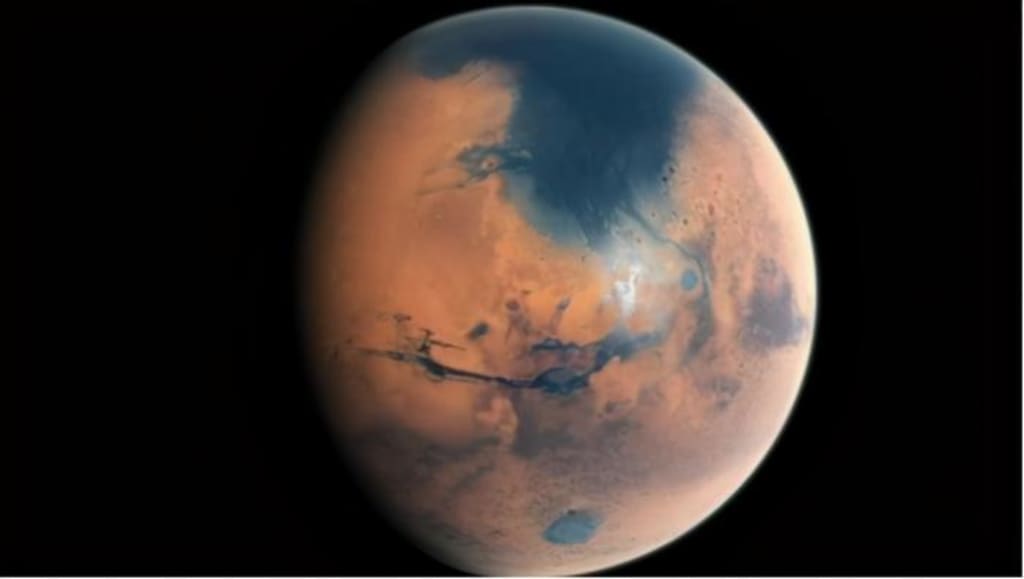Mars transformation is put on the agenda, the first list of Mars residents is released, but there are no humans
Can Mars really be transformed into a "second Earth"?

When it comes to Mars, as early as decades ago, many scientists planned to transform it and carry out Mars immigration in the future. The author still remembers that when I was a child watching TV news, I once saw a similar report in the "News Network".
However, now that humans have entered the 2020s, Mars immigration is still far away. Of course, this is also related to the lack of human science and technology. So, how should humans transform Mars?
Can Mars really be transformed into a "second Earth"?
Let’s first look at why Mars must be transformed. Some friends may say, is it not good for human beings to live on earth? Why spend a lot of time and money to transform Mars? And this project is not necessarily successful, even if it is successful, I don't know how many years later.
Instead of spending a lot of investment on Mars, it is better to use these investments to protect the earth and help the development of human science and technology, so that humans can live longer on the earth.
Of course, this view is not wrong, but children all know the truth that "eggs cannot be put in the same basket". In short, once the disaster strikes, human civilization may never be possibility of survival.
However, if we disperse human civilization into the universe, even if the earth becomes no longer habitable in the future, human civilization will still have a way to continue. .
At the same time, whether from the perspective of the evolution of the solar system or from the perspective of the earth itself, it cannot always be suitable for human beings, which also means that human beings cannot survive on the earth forever. Make your own plans in advance, and Mars is our best choice at this stage.
In addition, there is a view that human transformation of Mars is, in fact, strictly speaking, "recovering Mars", because research over the years has shown that although Mars looks desolate today, Mars was also a habitable planet in the early days. , but for some reasons, the planet is now in a "sleeping", and humans are just helping Mars restore its original appearance.
What should humans do? Simply put, transforming Mars is two steps: establishing an ecosystem and simulating the Earth's environment. Let's break it down item by item.
Let’s start with the first point: building an ecosystem. To put it simply, it is to restore the habitability of Mars, so that Mars once again has a thick atmosphere and liquid water, and at the same time, it also warms up the surface. In this way, a prototype of Mars similar to the early Earth is basically established. .
Now, scientists have found that there is a large amount of water ice in the polar regions of Mars. In this way, some means can be used to melt the water ice on Mars. In this way, it will naturally bring liquid to Mars. At the same time, methods such as establishing a nuclear factory on Mars can also allow the rapid accumulation of greenhouse gases on Mars, thereby making the atmosphere of Mars thicker and having the effect of heat preservation.
Of course, after this stage is reached, Mars is just a potentially habitable planet for humans. It is a little different from the habitable planet in the minds of humans. At this time, humans need to take the second step. , is to completely simulate the earth's environment and make Mars an aerobic ecosystem.
What needs to be done in this step? To put it simply, it is to move life on Earth to Mars. However, the first group of Martian residents from Earth will not be humans or relatively complex creatures, but will simulate the evolution of early life on Earth and immigrate first. A batch of microbes goes to Mars.
The first Martian life will not be humans
I believe many of my friends know that modern scientific research has found that there was no oxygen on the early Mars, which means that the earliest life on Earth were all anaerobic organisms, and they could survive without oxygen.
About 2.5 billion years ago, when the earliest microbes that could perform photosynthesis were born, the structure of the Earth's atmosphere began to change. Therefore, if humans really want to completely transform Mars in the future, it will truly become a "Second Earth" ", you need to send microorganisms such as bacteria and algae up first, and then let them produce oxygen on Mars.
And through these microorganisms, the soil of Mars can be turned into organic soil, so that some other terrestrial life can be sent to Mars in batches.
It can also be seen from this point that although humans have now begun planning for the transformation of Mars, in fact, humans may not be able to truly immigrate to Mars for hundreds of years, even thousands of years, tens of thousands of years.
This also means that whether it is Musk or other researchers with rich ideas about Mars immigration, in fact, it is impossible to send human residents to Mars for permanent settlement in this century. of.
Scientists have also estimated this. Based on the current level of human beings, it will take about 1,000 years to transform Mars at the fastest, which also means that humans may continue to survive on Earth for at least 1,000 years. It takes time to have the opportunity to truly leave the earth and go to the sea of stars.
Just like in "The Wandering Earth", before the end of the world, humans "escape" the solar system with the earth. It takes 2,500 years to reach the nearest star system, which requires the joint efforts of hundreds of generations. Yes, obviously, human immigration into space will never be an easy task.
So, let's look at another question: Since researchers believe that Mars in ancient times was similar to Earth in terms of climate and environment, then, did life or civilization exist on Mars?
Could life exist on Mars?
As early as the 1960s, with the arrival of human probes on Mars, in fact, whether there has been life on Mars, and related research has been carried out.
Among all the probes launched to Mars, the most mysterious probe is the "Phobos series probe" launched by the former Soviet Union in July 1988. In addition to detecting Mars, they also plan to detect Phobos. One and Deimos.
However, Phobos Probe 1 suddenly lost contact with the earth mysteriously on the way to Mars, and the researchers who have been monitoring its dynamics on the ground also said that Phobos Probe 1 did not have any malfunctions. Just suddenly disappeared.
Of course, this is not the most terrifying, the one that really makes people think about it is the Phobos probe 2. At the end of January 1989, the Phobos probe 2 finally successfully reached Mars, and it also successfully started the investigation of Phobos.
It seems that everything is going well, but the same strange thing happened to Phobos Probe 2. On March 25, 1989, Phobos Probe 2 also mysteriously lost contact, and there was no malfunction, which made many people think that Phobos Probe 2 may have encountered something.
Because the Phobos series detectors were not independently developed by the former Soviet Union, in order to give an explanation to the partners, the former Soviet Union released the last picture taken before the Phobos Detector No. 2 lost contact.
At the same time, in April 1989, scientists from the former Soviet Union also published an article in the journal "New Scientist", stating that the loss of Phobos probe 2 was indeed related to encountering some "strange" things.
After the disintegration of the former Soviet Union, Russia finally disclosed the truth about the disappearance of the Phobos probe 2. In the pictures released by Russia, it actually encountered a "spaceship". The appearance of this spaceship seems to be A cigar, according to the researchers' calculations, has an overall length of about 25 kilometers. When the Phobos probe 2 encountered it, it looked for the one suspended below Phobos.
Afterwards, Phobos probe 2 completely lost contact with the earth, and its whereabouts can never be found. Researchers believe that when an alien civilization visited Mars, it discovered a probe from Earth and destroyed it.
There are also views that it may be possible that there are still civilizations on Mars, but humans are not clear about that. So how likely is a civilization on Mars?
From the perspective of modern scientific research, the answer is minimal, but if it is from the perspective of some conspiracy theories, the answer may be 100%.
Although Mars has had a habitable period, researchers generally believe that because the habitable period of Mars is only a few hundred million years, this leads to the existence of some simple life forms and complex life forms on Mars at most, which is not enough. Time was conceived on Mars.
Including "Perseverance", "Tianwen No. 1" and other Mars probes, the way they search for life on Mars is also to search for fossils that may contain microorganisms, not to search for Martian civilization or complex life. .
However, there are indeed many puzzles in the series of encounters of the former Soviet Phobos series probes around Mars. Of course, there have also been many unknown UFOs in the earth's sky, so it is very likely that Some alien civilizations have discovered and visited Mars. As for whether they have plans to transform Mars like humans, we don't know. What do you think about this? What do you think the Phobos series probes of the former Soviet Union encountered?
About the Creator
sayre laylah
Tired of monotonous climbing moves, but every step is close to the top
Enjoyed the story? Support the Creator.
Subscribe for free to receive all their stories in your feed. You could also pledge your support or give them a one-off tip, letting them know you appreciate their work.






Comments
There are no comments for this story
Be the first to respond and start the conversation.